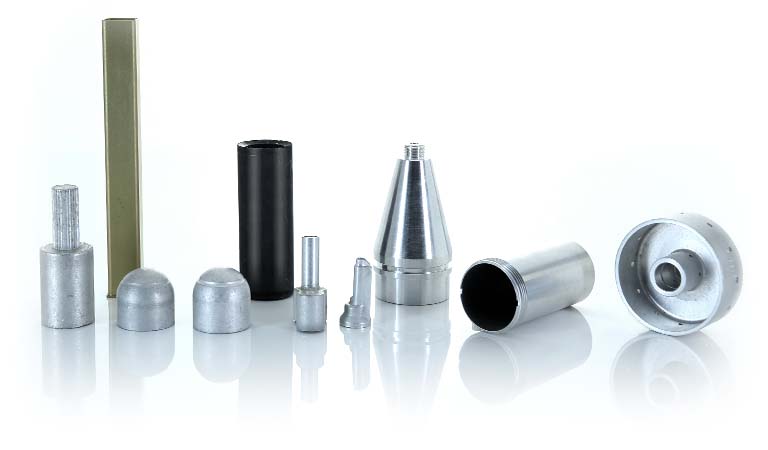Compare your process to impact extrusion
Drawbacks of machining
Machining metal parts begins with a larger amount of material than the finished part and requires the "hogging out" of material to achieve the finished part. This method wastes material and burns through time and tooling.
Drawbacks of casting
Metal casting creates parts by pouring molten metal into a mold. The metal then cools and hardens into the form given to it by this shaped mold. Casting may be less expensive than machining but is slower, and parts are less precise.
Benefits of impacting
- Creates thinner wall components
- Produces parts with closer tolerances
- Requires less secondary machining
Drawbacks of forging
Forging metal parts uses extreme heat to create parts. Metal grains are aligned during forging, which increases strength, but secondary processes are more difficult. Capital expenses and safety procedures are significant.
Benefits of impacting
- Produces lighter-weight parts of similar strength
- Creates closer-tolerance components
- Reduces secondary machining
Drawbacks of welding
Welding together multiple components to create a complex part is both time consuming and laden with a variety of challenges, including imperfect welds, hazardous fumes, high temperatures, and many other safety considerations.
Benefits of impacting
- Eliminates connection failures
- Produces parts that won't leak
- Reduces labor costs
Drawbacks of deep drawing
Deep drawing metal parts introduces a range of concerns, including stress fractures, top-edge wrinkles, necking, tearing, puckering, surface irregularities, uneven top rim, and excess material at the top of the drawn shell.
Benefits of impacting
- Produces parts with thicker base than side walls
- Creates parts with length more than twice diameter
- Requires only one-time tooling cost
Drawbacks of stamping
Metal stamping requires expensive presses to produce simple shapes. The cost and time required for dies results in a longer pre-production process. Dies can be difficult to change, especially if the design must be modified during production.
Benefits of impacting
- Achieves more complex geometries
- Offers multiple wall thicknesses
- Eliminates sub-assemblies
Drawbacks of sub-assemblies
The inherent higher costs of maintaining parts inventory in addition to the added costs of welding or other joining techniques, imperfections in the joining process, and joints that are subject to leaking make this process less than ideal.
Benefits of impacting
- Eliminates costly welds, joining techniques
- Produces stronger parts that won't leak
- Reduces inventory costs
Alternative to your process
Contact us. Our team can collaborate with you and define the ways we can help maximize your production.

